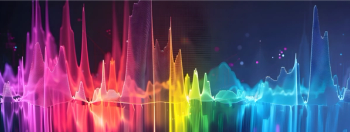
Using Spectroscopy to Reveal the Secrets of Space
Scientists are using advanced spectroscopic techniques to probe the universe, uncovering vital insights about celestial objects. A new study by Diriba Gonfa Tolasa of Assosa University, Ethiopia, highlights how atomic and molecular physics contribute to astrophysical discoveries, shaping our understanding of stars, galaxies, and even the possibility of extraterrestrial life.
Probing the Cosmos Through Light
The vastness of the universe is a mystery that scientists have long sought to unravel. At the forefront of this endeavor is spectroscopy, an analytical technique that allows researchers to analyze the interaction between light and matter. In a recent paper published in the World Journal of Applied Physics, Diriba Gonfa Tolasa of Assosa University, Ethiopia, explores how atomic and molecular physics intersect with astrophysics to provide new insights into celestial bodies. By leveraging advanced spectroscopic techniques, scientists can decode the composition, temperature, and movement of stars, galaxies, and interstellar media (1).
The Role of Spectroscopy in Astrophysics
Spectroscopy has become one of the most powerful tools in astrophysics. By examining the spectral lines emitted or absorbed by elements and molecules in space, scientists can determine the physical conditions of distant celestial objects. One of the most significant applications of spectroscopy is the measurement of redshift and blueshift, which helps astronomers track the expansion of the universe and the movement of galaxies. This method has led to new discoveries, including evidence supporting the cosmic origins and insights into dark energy (1-2).
Beyond large-scale cosmic phenomena, spectroscopy is essential in understanding the life cycles of stars. By analyzing the spectral signatures of elements, researchers can determine a star’s composition, temperature, and lifetime stages. Recent advancements in high-resolution spectroscopy have even enabled the detection of heavy elements in stellar atmospheres, revealing the processes that govern stellar formation and destruction (1).
Advancements in Spectroscopic Techniques
Tolasa’s study emphasizes how modern spectroscopic techniques are advancing space research. High-resolution spectroscopy, using instruments like the Keck Observatory and the Very Large Telescope (VLT), has allowed scientists to detect faint spectral lines, offering a more detailed view of complex molecular interactions. The introduction of infrared (IR) and ultraviolet (UV) spectroscopy has further expanded the scope of research, enabling the study of cooler celestial bodies and high-energy astrophysical events (1).
One of the most exciting developments in this field is the deployment of space-based observatories, such as the James Webb Space Telescope (JWST). With its advanced infrared spectroscopic capabilities, JWST is expected to provide unprecedented data on exoplanet atmospheres, offering insights into planetary formation and habitability. By identifying molecular signatures such as water vapor, carbon dioxide, and methane, JWST is playing a major role in the search for extraterrestrial life (1-2).
Implications for Cosmology and Astrobiology
The ability to detect and analyze molecular signatures in space has serious implications for both cosmology and the search for life beyond Earth. By studying the chemical composition of distant galaxies, scientists can trace the history of the universe, providing insights into the formation of cosmic structures. Furthermore, the presence of complex organic molecules in interstellar space suggests that the molecules essential for life may be more widespread than previously thought (1).
Tolasa’s research also highlights the interdisciplinary nature of modern astrophysics, where atomic and molecular physics converge with astronomical observations. As spectroscopy techniques continue to advance, they promise to unlock new discoveries about the nature of the universe and our place within it (1).
The Future of Spectroscopic Exploration
Looking ahead, the integration of spectroscopy with next-generation telescopes and AI-driven data analysis will further enhance our understanding of space. With more sophisticated instruments and computational methods, researchers will be able to analyze vast amounts of spectral data with greater precision, opening new frontiers in astrophysics. From identifying habitable exoplanets to mapping the lifetime of galaxies, the potential for discovery is boundless (1).
As scientists refine their methodologies and expand their observational reach, spectroscopy remains a cornerstone of astronomical research. Tolasa’s work displays the value of atomic and molecular physics in shaping our comprehension of the cosmos. By continuing to push the boundaries of this field, researchers are not only solving age-old cosmic mysteries but also making a way for future generations to explore the universe in greater understanding and detail (1).
References
(1) Tolasa, D. G. Atomic and Molecular Physics in Astrophysics: Probing the Universe Through Spectroscopic Techniques. World 2025, 10 (1), 28–34. DOI:
(2) Ziurys, L. M. Prebiotic Astrochemistry from Astronomical Observations and Laboratory Spectroscopy. Annu. Rev. Phys. Chem. 2024, 75. DOI:
Newsletter
Get essential updates on the latest spectroscopy technologies, regulatory standards, and best practices—subscribe today to Spectroscopy.





